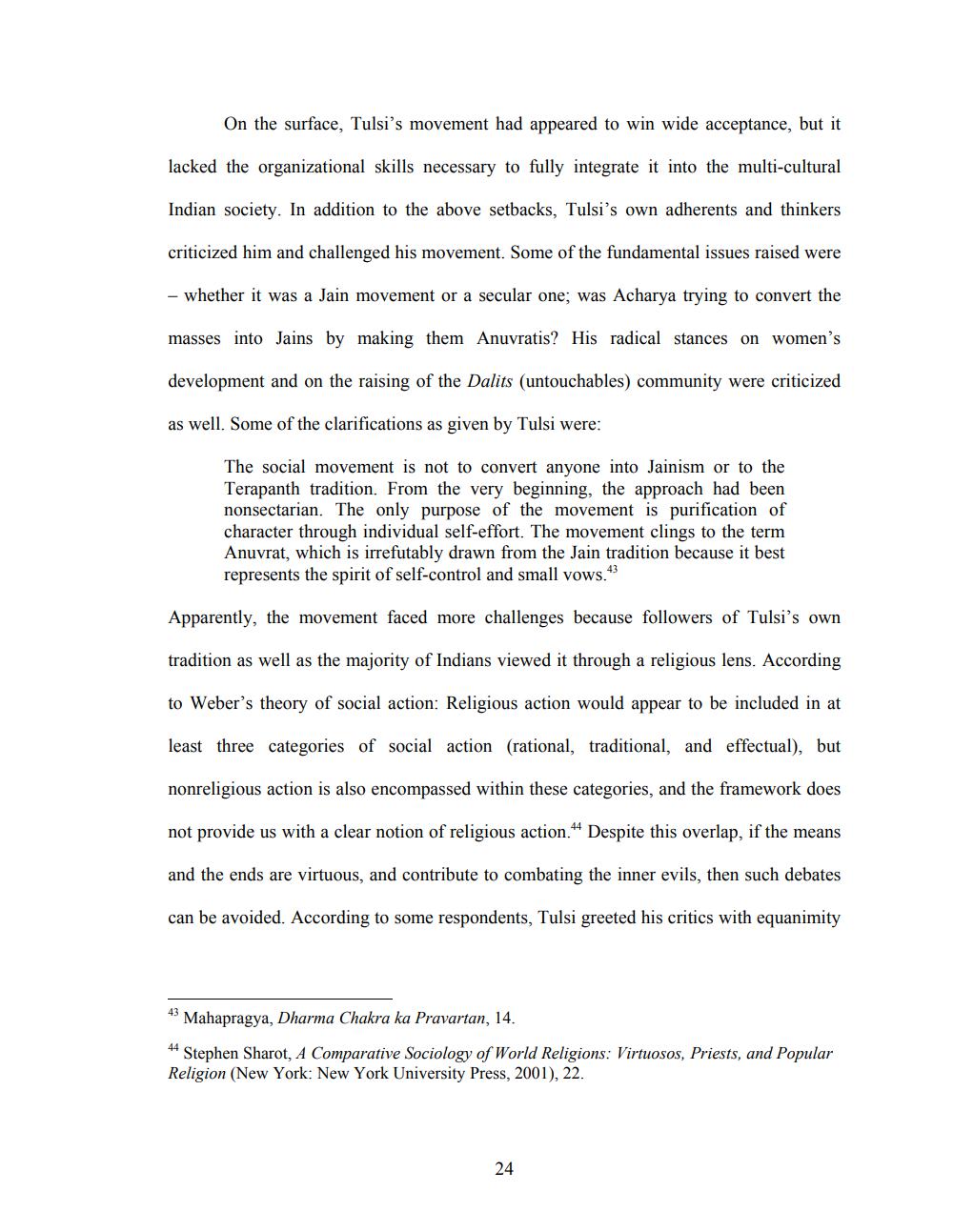________________
On the surface, Tulsi's movement had appeared to win wide acceptance, but it
lacked the organizational skills necessary to fully integrate it into the multi-cultural
Indian society. In addition to the above setbacks, Tulsi's own adherents and thinkers
criticized him and challenged his movement. Some of the fundamental issues raised were
- whether it was a Jain movement or a secular one; was Acharya trying to convert the
masses into Jains by making them
Anuvratis? His radical stances on women's
development and on the raising of the Dalits (untouchables) community were criticized
as well. Some of the clarifications as given by Tulsi were:
The social movement is not to convert anyone into Jainism or to the Terapanth tradition. From the very beginning, the approach had been nonsectarian. The only purpose of the movement is purification of character through individual self-effort. The movement clings to the term Anuvrat, which is irrefutably drawn from the Jain tradition because it best represents the spirit of self-control and small vows.
Apparently, the movement faced more challenges because followers of Tulsi's own
tradition as well as the majority of Indians viewed it through a religious lens. According
to Weber's theory of social action: Religious action would appear to be included in at
least three categories of social action (rational, traditional, and effectual), but
nonreligious action is also encompassed within these categories, and the framework does
not provide us with a clear notion of religious action.44 Despite this overlap, if the means
and the ends are virtuous, and contribute to combating the inner evils, then such debates
can be avoided. According to some respondents, Tulsi greeted his critics with equanimity
43 Mahapragya, Dharma Chakra ka Pravartan, 14.
44 Stephen Sharot, A Comparative Sociology of World Religions: Virtuosos, Priests, and Popular Religion (New York: New York University Press, 2001), 22.




